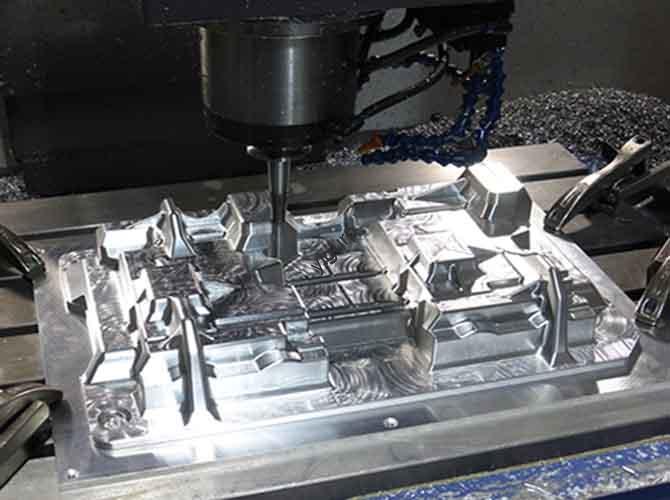Chaque machiniste CNC a été confronté à ce problème: les pièces se déforment après usinage, les outils s'usent trop vite, ou le produit final ne résiste pas à une utilisation intensive. La solution? Matériaux de traitement thermique. En optimisant les propriétés des matériaux avant ou après Usinage CNC, vous pouvez résoudre ces problèmes et faire passer votre production au niveau supérieur. Explorons comment.
1. Pourquoi les matériaux de traitement thermique sont importants pour l'usinage CNC
Le traitement thermique n’est pas seulement une étape supplémentaire : c’est la base des pièces CNC de haute qualité. Voici comment cela résout 4 problèmes de fabrication courants:
| Problème résolu | Comment le traitement thermique aide | Exemple du monde réel |
|---|---|---|
| Mauvaise résistance à l'usure | Processus commeéteinte boost material hardness by 30–50%, making parts last longer. | A CNC-machined steel gear treated with quenching lasts 2x longer than an untreated one. |
| Part Deformation/Cracking | Recuit eliminates residual stresses from machining, Garder les pièces dimensionnellement stables. | A large aluminum plate for aerospace use: without annealing, it warped 0.5mm; with annealing, warpage dropped to 0.1mm. |
| Difficult Cutting Performance | Normalisation softens tough materials (Par exemple, en acier à haute teneur en carbone), reducing tool force by 20%. | Machining an untreated 4140 steel bar takes 10 minutes; a normalized one takes 7 minutes. |
| Weak Corrosion Resistance | Nitrative adds a protective layer to materials, making them resistant to chemicals or saltwater. | A CNC-machined marine bolt treated with nitriding didn’t rust after 6 mois dans l'eau de mer (untreated bolts rusted in 1 mois). |
2. Méthodes courantes de traitement thermique pour les matériaux d'usinage CNC
Not all heat treatments are the same—you need to pick the right one for your material and part. Voici le 3 main categories, with their key details:
2.1 Traitement thermique global (Pour les propriétés de pièces entières)
These methods treat the entire material, ideal for parts that need uniform strength or flexibility.
| Méthode | Étapes de traitement | Meilleur pour les matériaux | Benefit for CNC Machining |
|---|---|---|---|
| Recuit | Heat to 800–950°C → Hold 1–3 hours → Cool slowly (air or furnace). | Aluminium, acier à faible teneur en carbone | Improves cutting speed by 15–20%. |
| Normalisation | Heat to 850–1000°C → Hold 1 hour → Cool faster than annealing (still air). | Medium-carbon steel, fonte | Creates finer material structure for smoother CNC cuts. |
| Éteinte + Tremper | 1. Éteindre: Heat to 800–900°C → Cool rapidly (eau / huile). 2. Caractère: Reheat to 200–600°C → Cool. | En acier à haute teneur en carbone, acier en alliage | Équilibre la dureté (from quenching) et la ténacité (de la température) for durable parts. |
2.2 Traitement thermique de surface (Pour la résistance de la couche externe)
Use these when you need a hard surface but a flexible core (Par exemple, engrenages, arbres).
- Induction Heating Quenching: Uses electromagnetic induction to heat the surface (2–5mm deep) in 10–30 seconds, Puis tremper. Perfect for high-volume CNC parts (Par exemple, essieux automobiles) because it’s fast and automated.
- Laser Heating Quenching: A high-energy laser scans the surface, heating it to 900–1200°C in milliseconds. Great for precision parts (Par exemple, instruments médicaux) since it causes almost no deformation.
2.3 Traitement thermique chimique (Pour les couches protectrices)
These methods add elements (carbone, azote) to the material’s surface for extra protection.
- Carburisant: Heat the part in a carbon-rich medium (850–950 ° C) for 2–8 hours. Carbon penetrates 0.5–2mm deep, making the surface hard (HRC 58–62) while keeping the core soft. Ideal for CNC-machined gears or camshafts.
- Nitrative: Heat in a nitrogen medium (500–550 ° C) for 10–40 hours. Forme un mince (0.1–0,5mm) hard layer that resists corrosion. Perfect for parts used in chemical plants or marine equipment.
3. Comment choisir le bon traitement thermique pour votre projet CNC
You might ask: “With so many options, how do I pick?” Follow this 3-step process:
- Define Your Part’s Goal: Do you need wear resistance (Par exemple, outils)? Résistance à la corrosion (Par exemple, parties marines)? Or easy machining (Par exemple, prototypes)?
- Match the Material: Aluminum works best with annealing; high-carbon steel needs quenching + tremper; stainless steel benefits from nitriding.
- Consider Production Speed: For fast turnaround (Par exemple, 1-week prototypes), use induction quenching. For long-lasting parts (Par exemple, machines industrielles), choose carburizing or nitriding.
Exemple: If you’re CNC-machining a stainless steel valve for a chemical tank (goal: résistance à la corrosion, matériel: acier inoxydable, production time: 2 semaines), nitrative is the right choice.
4. Perspective de la technologie Yigu
À la technologie Yigu, we’ve helped hundreds of clients optimize CNC production with heat treatment materials. La plus grosse erreur que nous voyons? Skipping heat treatment to save time—only to waste more time fixing deformed parts or replacing tools. We recommend integrating heat treatment early: Par exemple, annealing aluminum before CNC machining cuts tool costs by 25%, and nitriding steel after machining boosts part lifespan by 3x. It’s not just a step—it’s an investment in consistent, Résultats de haute qualité.
FAQ
- Should I heat treat the material before or after CNC machining?Ça dépend: Annealing/normalizing (to improve cutting) Fonctionne mieux avant usinage. Quenching/nitriding (to boost hardness/corrosion resistance) is done après usinage (to avoid damaging the treated surface).
- Does heat treatment add extra cost to CNC projects?Court terme: Oui (Par exemple, annealing adds $5–$15 per part). À long terme: No—heat treatment reduces tool replacement costs by 30% and cuts rework (from deformation) par 40%, saving money overall.
- Can all CNC machining materials be heat treated?La plupart peuvent: Acier, aluminium, and titanium respond well. Les exceptions incluent certains plastiques (Par exemple, PLA) et métaux mous (Par exemple, cuivre pur)-le traitement thermique n'améliorera pas leurs propriétés de manière significative.
